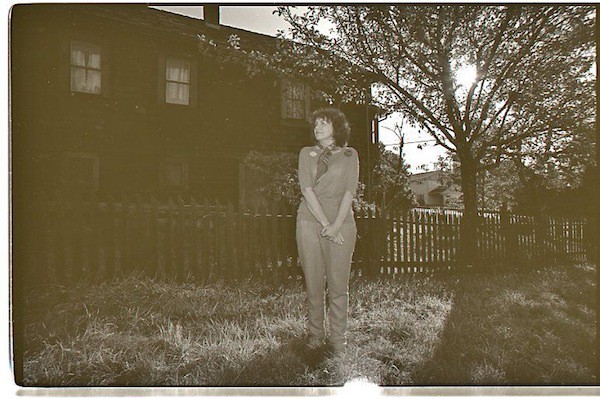Alice Munro’s Choices, and a Reading List
by Anne Helen Petersen

I woke up this morning, turned on my phone, and immediately knew that today would be the best day, because today was the day that my favorite author, Alice Munro, had won the Nobel Prize in Literature. She’s 82 years old, she’s Canadian, she’s selfless in interviews, and she’s spent her life writing small, immaculate vignettes of women — which is all to say that she’s unlike almost all writers who’ve been awarded this prize, and I couldn’t be happier.
Alice Munro is known as the master of the short story. Stories this morning have credited her with rejuvenating the form, and I don’t disagree. I didn’t know I liked short stories until I read Alice Munro, and then I realized I loved them. She was writing short stories before Raymond Carver, before Annie Proulx. As the well-trod narrative goes, she started writing them as “practice” for her novel, knowing that she’d never be able to carve out enough time to write something longer between caring for her four children.
But her short stories never feel like something unfinished or slight or less-than. They may just offer the tip of the iceberg of a woman’s life, but the vantage they offer of all that lies beneath is simply stunning. Each time I finish a Munro story, I sit with it, staring at the page, letting its power settle in. My blood feels denser; time slows down. I don’t mean that her writing is boring or lethargic; in fact, quite the opposite — she makes the quotidian, the hidden, the quiet come alive.
With some writers, you pull quotes to underline their mastery. With Munro, I’d have to pull an entire short story. In “Hateship, Friendship, Courtship, Loveship, Marriage,” a young girl and her conniving friend play a trick on their homely nanny, writing her love letters from her estranged father. When the nanny leaves her post to find the father, you expect it to play out on one side of the melodramatic spectrum: it’ll either end in tears or bliss. You expect that because other writers, on the screen and on the page, have taught you to. But life rarely works with such grand, sweeping movements, and the deftness with which Munro handles the story, the calm matter-of-factness of it, is part of why its outlines and impact will never leave me.
There’s a small scene in that story when the main character goes to a clothing boutique and purchases what she believes will become her wedding suit. The way Munro sketches the process of trying on clothes, looking at oneself in the mirror, and the small epiphanies of possibility and identity — it conveys what 10 makeover montages never can:
…when Johanna had got down to her underwear there was a tap and a hand through the curtain.
“Just slip this on, for the heck of it.”
A brown wool dress, lined, with a full skirt gracefully gathered, three-quarter sleeves and a plain round neckline. About as plain as you could get, except for a narrow gold belt. Not as expensive as the suit, but still the price seemed like a lot, when you considered all there was to it.
At least the skirt was a more decent length and the fabric made a noble swirl around her legs. She steeled herself and looked in the glass.
This time she didn’t look as if she’d been stuck into the garment for a joke.
The woman came and stood beside her, and laughed, but with relief.
“It’s the color of your eyes. You don’t need to wear velvet. You’ve got velvet eyes.”
That was the kind of soft-soaping Johanna would have felt bound to scoff at, except that at the moment it seemed to be true. Her eyes were not large, and if asked to describe their color she would have said, “I guess they’re a kind of a brown.” But now they looked to be a really deep brown, soft and shining.
It wasn’t that she had suddenly started thinking she was pretty or anything. Just that her eyes were a nice color, if they had been a piece of cloth.
Such “throwaway” scenes are part of what led critics to call Munro the master of the domestic. It’s a backhanded compliment: “serious” writers unpack public spaces and problems, then those who focus on the private sphere are just dabbling. This delineation is, quite frankly, utter bullshit. A female commentator on NPR today offhandedly remarked that what separated Munro from past winners of the prize was that she wasn’t “political” — instead, she focused on love and relationships. Munro’s writing is about love and relationships and family, but that’s just another way of saying that it’s about the choices that women make, and the way that society has circumscribed those choices. Munro’s stories span the last century: you never know if the next one is going to be set in turn-of-the-century rural Ontario, right after the war, or 20 years ago. She rarely gives clear markers of time, which has the effect of underlining just how little has changed in terms of gender relations and cultural expectations. Munro’s writing is vigorously feminist: the personal is always, always political, and all the more powerful for its lack of didacticism.
People say that Munro writes the same story over and over again. There might be some truth to that. But when the story is this perfect, I’m fine with reading it forever.
Starting points: All of Munro’s short story collections are excellent, but if you need to start somewhere…
Hateship, Friendship, Courtship, Loveship, Marriage (2001)
The Moons of Jupiter (1982)
Dear Life (2012)
The Love of a Good Woman (1998)
Runaway (2004)
Photo via Facebook.
Anne Helen Petersen is a Doctor of Celebrity Gossip. No, really. You can find evidence (and other writings) here.